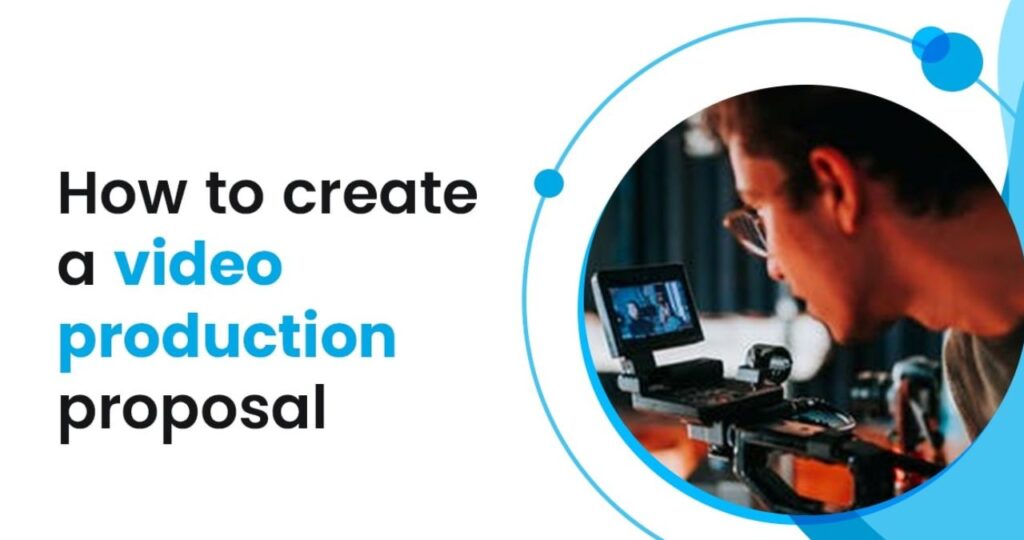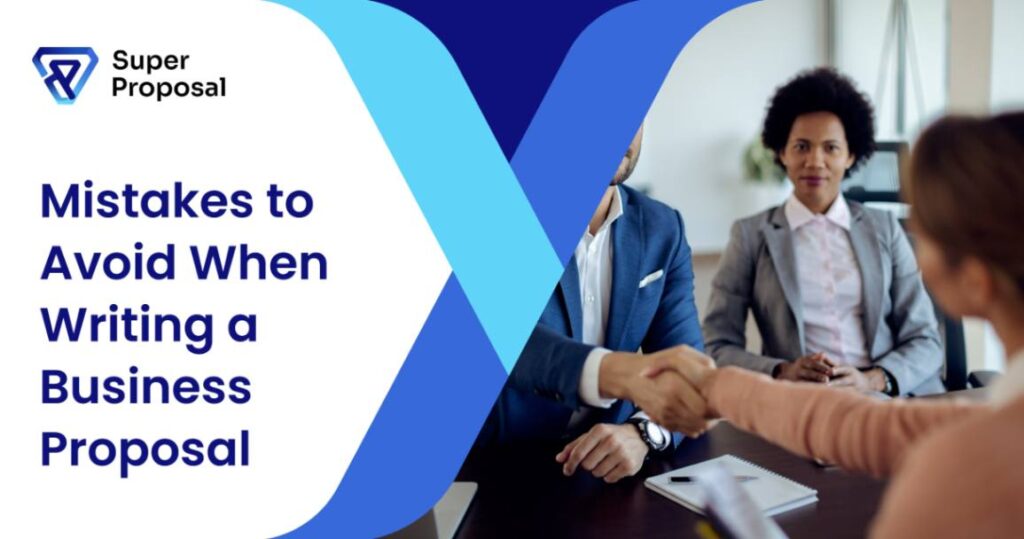How to Write Persuasive Proposal Titles and Subtitles
AUG 20, 2024 | LAST UPDATED ON AUG 20, 2024 BY ANGELICA NAIDU

Ever heard the saying “first impressions matter”? In the business world, sending a well-crafted proposal is how you make a great impression.
However, in every proposal, the title page is what sets the tone. It ensures whether the client will be interested to read the entire proposal or not.
A boring title page costs missed opportunities, like losing client interest or outright rejection. A good title page can make a difference, and a truly captivating one can help you close deals faster.
Before we get to the good stuff, let’s understand how you should not write a proposal title:
- “Proposal for Project X” – Could it be more generic?
- “RFP Response – June 2024” – Sounds like a document number, not a solution.
- “We Can Do This Project!” – Enthusiasm is great, but more substance would be nice.
These titles lack clarity and excitement and fail to show any understanding of the client’s needs. So, let’s walk you through a step-by-step process to create an effective proposal title that can help you increase conversion rates.
Table of Contents
ToggleCrafting a Winning Proposal Title: The First Impression That Matters
Consider your proposal title as a movie trailer for your project – short and catchy. It shows the client a glimpse of what’s coming next.
Things to consider before writing your proposal title
Here are two things you need to remember before you start writing your proposal title –
- What’s in it for me (WIIFM): Put yourself in your client’s position. What are their pain points? What kind of result are they hoping for? Your title should assure that you have the solution to all their problems.
- Follow the Rules: Most RFPs (Request for Proposals) will have specific guidelines for your proposal title. Stick to them like glue! Even the best proposals are rejected if you don’t follow the rules.
Pro Tip: Super Proposal has over 100 pre-built proposal PDF templates for various industries and projects. Choose the one that fits your needs, customize it, and boom—you now have a professional-looking proposal ready to blow your clients away.
Improve Your Proposal Titles: Tips and Examples
Now that you have got the basics down let’s dive into crafting compelling titles:
Be Specific and Descriptive:
Remove the vague phrases and get to the point. The client ought to be able to understand from your title what your solutions are for their problems.
- Bad Example: “Marketing Strategy Proposal” (This is quite basic and general)
- Good Example: “Increasing Website Traffic by 20% Through Targeted SEO and Content Marketing.”
See the difference? The second title provides a glimpse of the outcomes and benefits the proposal aims to deliver.
Action Verbs Are Your Friends:
Consider using words like “Boost,” “Transform,” or “Improve.” These phrases favorably affect the proposal and impress the client.
- Bad Example: “Proposal for [Project Name]”
- Good Example: “Proposal for [Project Name] – Delivering [Client Goal] through [Key Solution]”
The good example uses an action verb (“Delivering”), which adds a sense of urgency and provides a sense of appeal to the proposal. They create an idea and provide a hint of how you can benefit the client and upscale their project.
Show Off Your Results:
Numbers and statistics are like a trust badge for your proposal. Measurable outcomes make your solutions more believable and prove that you can make a difference.
- Bad Example: “Improve Customer Satisfaction”
- Good Example: “Boost Customer Satisfaction by 15% in 6 Months with a Streamlined Customer Support Process.”
The example above clearly showcases what the client can expect in the proposal. It makes the claims more credible by highlighting increased customer satisfaction. Moreover, the timeline also helps demonstrate the effectiveness of specific solutions within a certain time frame.
Keep It Short and Sweet:
Aim for 10-15 words or less. You want the title to be simple and easy to remember. A short title should catch the client’s attention, especially if they are looking at many proposals at once.
Avoid Jargons:
In the title, avoid using industry jargon like “synergize,” which your client might not understand. Instead, use words like “New approaches,” which is simple and easy to remember.
Make sure your title is clear and accessible to all. Consider what you wish to convey and create the title accordingly.
Match the Tone:
When setting the tone for the proposal, consider who your audience is and what kind of project you are doing. A lighthearted title with some quirky twist would be fine for a creative designing project that you would pitch to a young startup. However, a corporate client who wants an in-depth financial analysis would require a more formal approach.
- Bad Example: “Printing Services Proposal”
- Good Example: “Printing Services You Can Count On”
This title is clear, concise, and speaks directly to the client’s needs. It’s also the exact title used in our Printing Services Proposal Template.
5 Key Elements of a Winning Proposal Title
Let’s explore the five elements that can make your title page stand out and captivate your client’s attention.
Project Title:
The project title acts as the main header of your proposal. It should be brief, catchy, and directly convey the message of your proposal’s content. At Super Proposal, we understand the importance of a strong project title.
For example, our template for a Cleaning Proposal is titled “Cleaning you can count on.” This title grabs the client’s attention by emphasizing on brand visibility and growth.
Project Subtitle:
Subtitles are useful in providing further details and in generating interest amongst the clients. It summarizes the unique selling points of your proposal or details the specific pain points in your client’s business operations.
Let’s take a look at some examples:
- Bad Example: “Our Proposal”
- Good Example: “Driving Efficiency and Cost Savings: Streamlining Supply Chain Operations”
Your Name and Organization:
Including your name and organization on the title page is critical to establishing credibility and trust. It clearly shows that you are professional and adds a personal touch to your proposal. You can add your logo to enhance your brand identity and make a lasting impression.
Client Name and Organization:
Simple ways of connecting involve personalizing your proposal using the client’s name and organization. This will give them the impression that you took time to understand their needs and tailor the proposal. Personal touches can make your proposal more relevant and bring it closer to a positive response.
Our Super Proposal templates provide automation with ‘variables’ that fill in the client’s and your contact information spontaneously when you choose the recipient while opening a proposal template. This saves you time and ensures a professional look for all your proposals.
Date and Version:
Putting the date and version on your proposal helps keep things organized and clear. Plus, it tells the client when you made it. Using the latest proposal version avoids mix-ups and keeps things professional throughout the proposal process.
How can Super Proposal help you out?
Why bother writing the perfect title yourself when Super Proposal can do it for you? Our proposal software takes out a lot of the guesswork with:
- Pre-written Title Pages: You will find many well-crafted templates to start your proposal.
- Customizable Options: Customize the templates in any way to match your brand and the project perfectly.
- Tips and Guidance from Experts: Get inspiration and best practices for writing attention-grabbing titles.
- Having Super Proposal, you can easily come up with proposal titles that awe your clients. So, goodbye to stress, and let us do the heavy lifting!
Quick Links
Making it Your Own
Remember, a proposal title is an opportunity to make a strong first impression. Keep it clean, professional, and relevant to the project. Start with Super Proposal templates, but feel free to add your own style. You can pick different fonts, colors, or pictures to match your brand’s look.
Increase your close rates today!
Secure every pitch that you make with Super Proposal. Craft winning proposals, share and track them on a single, comprehensive platform.
✓ 15-Day Trial. No Credit Card Required.




